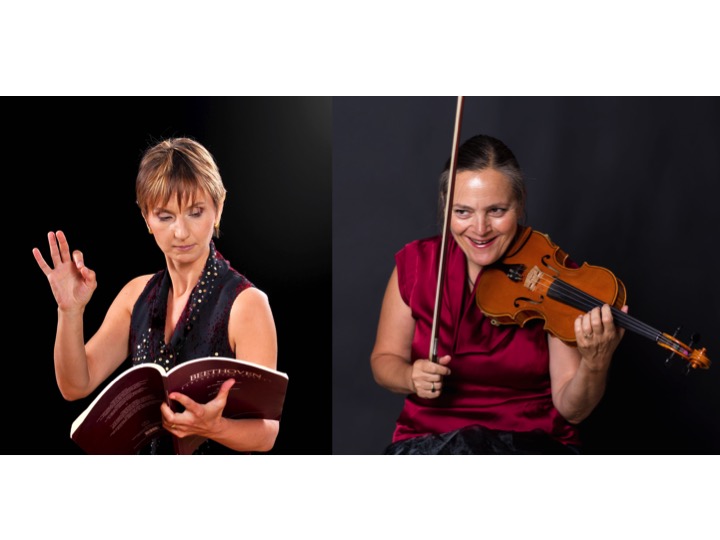
Lunchtime recital
Date: Thursday 04th October 2018
Time: 1.05pm - 1.50pm
Venue: St Laurence Church
Location: Corbet Teys Road, Upminster, Essex, RM14 2BB
Artists: Krassimira Jeliazkova - Violin
Elizabeth Mucha - Piano

Ludwig van Beethoven Sonata for piano and violin No 3, Eb Major, Op. 12
- Allegro con spirit
- Adagio con molta espressione
- Allegro molto
Claude Debussy Sonata in G Minor
- Allegro vivo
- Intermede
- Finale
Mario Castelnuovo – Tedesco
Concert transcription of “Largo al factotum” from “Rossini’s opera, The Barber of Seville
Each of the three pieces in our programme is, in its own way, a celebration of originality and inventiveness. Beethoven’s 3rd violin sonata, composed in 1798, although standing firmly in the classical period, already announces the unveiling of the musical creator who would forge his own path in composition. Moments of bold harmonic exploration coupled with a breadth of expression in the slow 2nd movement point to the unique musical language of his later works. The first movement defiantly showcases the novel idea that these are duo sonatas and not a violin sonata with a piano accompaniment with a virtuosic exchange of semiquaver passages shared between the two instruments. The final movement is closer to Haydn in character and allows us just to sit back and enjoy the wit and joy of the music.
Debussy’s one and only violin sonata was composed at the end of his life in 1917. Despite being received unfavourably by the critics it has become a staple of the violin repertoire. Suffering from colon cancer and greatly troubled by WW1, Debussy’s compositional style in these last years seemed to move towards a more minimalist style while at the same time embracing a French nationalism, to the point that he signed these late works, Claude Debussy, Musicien Francais.
The 1st movement of the Sonata opens with alternating minor and major triads creating a melancholic and haunting atmosphere whilst the 2nd movement bursts with frivolity interspersed with nostalgia. The final movement opens with a reference to the 1st movt only to be swept away very quickly by a virtuoso gypsy like Rondo about which Debussy wrote to a friend:
“Through a quite humane contradiction, it is full of a joyous tumult. In the future, mistrust those works which appear to soar across the sky; often they have wallowed in the dark of a gloomy brain. Such is the finale of this sonata, which goes through the most curious deformations ending up with the simple game of an idea which turns on itself like a snake swallowing its tail.
Our programme ends with Italian composer Mario Castelnuovo-Tedesco’s adaptation of the aria, “Largo al factotum” from Rossini’s opera “The Barber of Seville”. This revels in a whimsical reinvention of the original aria and, as it was composed for the great violin master, Jascha Heifetz, it is not surprising that it makes great technical demands on both violinist and pianist.
